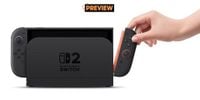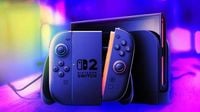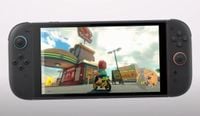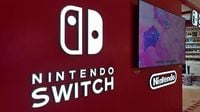Nintendo has officially unveiled its highly anticipated Switch 2 console, set to release globally on June 5, 2025, at a retail price of $449. This marks a significant increase from the original Switch's launch price of $299, raising eyebrows among gamers and analysts alike. The announcement came during a Nintendo Direct event on April 2, 2025, where the company detailed the console's specifications, features, and an exciting lineup of launch titles.
The Switch 2 builds upon the foundation laid by its predecessor, retaining the hybrid design that allows for both handheld and docked play. However, it boasts a host of new features that aim to enhance the gaming experience. The console includes a 7.9-inch 1080p resolution LCD screen with a 120Hz refresh rate, and when docked, it can run compatible games in 4K resolution. This represents a substantial upgrade in visual fidelity compared to the original Switch, which struggled with performance in certain titles.
One of the most talked-about aspects of the Switch 2 is its enhanced Joy-Con controllers, which now support mouse controls and include a new C button for a feature called GameChat. This allows players to engage in voice and video chats without the need for a headset, a move that aims to foster a more social gaming environment. The console also comes with 256GB of internal storage, significantly more than its predecessor, which should help accommodate the growing size of modern games.
In terms of game offerings, Nintendo has revealed a strong lineup for the Switch 2's launch, including titles such as Mario Kart World, Donkey Kong Bananza, and Hyrule Warriors: Age of Imprisonment. Notably, Mario Kart World will be available as a standalone title for $80 or bundled with the console for $500. While these prices may seem steep, analysts suggest that Nintendo is banking on its strong IP to drive sales, as first-party titles historically account for a significant portion of the company's revenue.
However, the pricing strategy has sparked concerns among consumers, especially in light of recent tariff increases imposed by the U.S. government. Analysts suggest that these tariffs, particularly those targeting imports from China and Vietnam, have contributed to the higher price point of the Switch 2. Joost van Dreunen, a professor at NYU, noted that the tariffs have put pressure on Nintendo's supply chain, which the company has been optimizing away from China for years. "Nintendo likely built some buffer into the console’s high price tag," he explained.
Despite the higher cost, many industry experts believe that the Switch 2 will perform well in the market. Daniel Ahmad of Niko Partners anticipates strong early adoption, driven by pent-up demand for a new Nintendo console and the appeal of its first-party games. However, he cautioned that the console might not sell as quickly as the original Switch after the initial launch period due to its higher price and the growing satisfaction among gamers with existing platforms.
Moreover, the Switch 2 aims to expand its market presence in regions like Asia and the Middle East and North Africa (MENA), where Nintendo has been increasing its distribution efforts. The company is looking to capitalize on the growing middle class and rising entertainment consumption in these areas. With new partnerships in countries like Saudi Arabia and Thailand, Nintendo hopes to make a significant impact in these emerging markets.
But the challenges are significant. The console's high price may limit early adoption in these regions, especially as younger audiences tend to favor mobile and PC gaming. The Switch 2's ability to compete with other consoles, particularly in terms of pricing and local services, will be crucial for its success in these markets.
As part of its strategy to enhance the gaming ecosystem, Nintendo is also expanding its online services. The company has reported that its online service now boasts nearly 40 million subscribers and generates over $1 billion annually. The addition of GameCube classic games to the Nintendo Switch Online service is expected to further boost engagement among subscribers.
Looking ahead, Nintendo's ability to sustain demand for the Switch 2 beyond its first few years will depend on its capacity to deliver compelling first-party titles and foster a robust third-party support system. Historically, Nintendo's first-party games have been a major driver of hardware sales, and the company will need to continue leveraging its strong IP to attract consumers.
In summary, the Nintendo Switch 2 represents a significant evolution of the original console, with enhanced features and a strong game lineup. Yet, its higher price point raises questions about long-term adoption and market penetration, especially in price-sensitive regions. As Nintendo prepares for the console's launch, all eyes will be on its ability to navigate these challenges and deliver a successful gaming experience.

![Nintendo Switch 2 guide – Pre-order details, hands-in impressions, official launch game schedule, more [Updated]](https://thumbor.evrimagaci.org/cY4M2yr6Knz3DsgZe4yHYYx6vkY=/200x0/tpg%2Fsources%2Ffc49b52c-d852-46d2-b27a-123f6e9650cb.jpeg)







